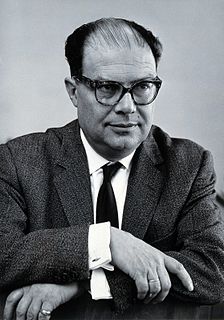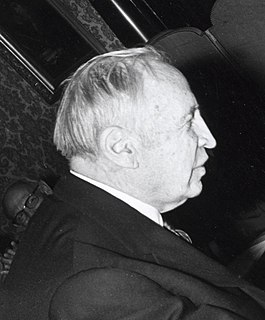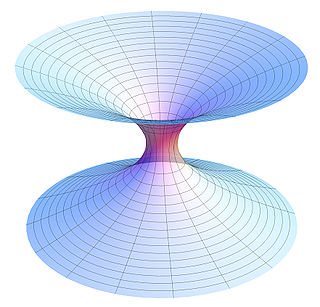
Particle physics is a branch of physics that studies the nature of the particles that constitute matter and radiation. Although the word particle can refer to various types of very small objects, particle physics usually investigates the irreducibly smallest detectable particles and the fundamental interactions necessary to explain their behaviour. By our current understanding, these elementary particles are excitations of the quantum fields that also govern their interactions. The currently dominant theory explaining these fundamental particles and fields, along with their dynamics, is called the Standard Model. Thus, modern particle physics generally investigates the Standard Model and its various possible extensions, e.g. to the newest "known" particle, the Higgs boson, or even to the oldest known force field, gravity.

A physicist is a scientist who specializes in the field of physics, which encompasses the interactions of matter and energy at all length and time scales in the physical universe.
Physicists generally are interested in the root or ultimate causes of phenomena, and usually frame their understanding in mathematical terms.
Physicists work across a wide range of research fields, spanning all length scales: from sub-atomic and particle physics, through biological physics, to cosmological length scales encompassing the universe as a whole.
The field generally includes two types of physicists: experimental physicists who specialize in the observation of physical phenomena and the analysis of experiments, and theoretical physicists who specialize in mathematical modeling of physical systems to rationalize, explain and predict natural phenomena.
Physicists can apply their knowledge towards solving practical problems or to developing new technologies.

Theoretical chemistry is a branch of chemistry, which develops theoretical generalizations that are part of the theoretical arsenal of modern chemistry, for example, the concept of chemical bonding, chemical reaction, valence, the surface of potential energy, molecular orbitals, orbital interactions, molecule activation etc.

Cosmogony is any model concerning the origin of either the cosmos or universe. Developing a complete theoretical model has implications in both the philosophy of science and epistemology.

Giulio (Yoel) Racah was an Italian–Israeli physicist and mathematician.

Lev Davidovich Landau was a Soviet physicist who made fundamental contributions to many areas of theoretical physics.

Computational physics is the study and implementation of numerical analysis to solve problems in physics for which a quantitative theory already exists. Historically, computational physics was the first application of modern computers in science, and is now a subset of computational science.

Mohammad Abdus Salam, was a Pakistani theoretical physicist. He shared the 1979 Nobel Prize in Physics with Sheldon Glashow and Steven Weinberg for his contribution to the electroweak unification theory. He was the first Pakistani to receive a Nobel Prize in science and the second from an Islamic country to receive any Nobel Prize.
Astrophysics is the branch of astronomy that employs the principles of physics and chemistry "to ascertain the nature of the astronomical objects, rather than their positions or motions in space". Among the objects studied are the Sun, other stars, galaxies, extrasolar planets, the interstellar medium and the cosmic microwave background. Emissions from these objects are examined across all parts of the electromagnetic spectrum, and the properties examined include luminosity, density, temperature, and chemical composition. Because astrophysics is a very broad subject, astrophysicists apply concepts and methods from many disciplines of physics, including mechanics, electromagnetism, statistical mechanics, thermodynamics, quantum mechanics, relativity, nuclear and particle physics, and atomic and molecular physics.

John Hasbrouck Van Vleck was an American physicist and mathematician, co-awarded the 1977 Nobel Prize in Physics, for his contributions to the understanding of the behavior of electrons in magnetic solids.
Experimental physics is the category of disciplines and sub-disciplines in the field of physics that are concerned with the observation of physical phenomena and experiments. Methods vary from discipline to discipline, from simple experiments and observations, such as the Cavendish experiment, to more complicated ones, such as the Large Hadron Collider.

The International School for Advanced Studies is an international, state supported, post-graduate teaching and research institute, located in Trieste, Italy.
Herman Feshbach was an American physicist. He was an Institute Professor Emeritus of physics at MIT. Feshbach is best known for Feshbach resonance and for writing, with Philip M. Morse, Methods of Theoretical Physics.
This is the timeline of the Universe from Big Bang to Heat Death scenario. The different eras of the universe are shown. The heat death will occur in 10100 years, if protons decay.
The Journal of Physics A: Mathematical and Theoretical is a peer-reviewed scientific journal published by IOP Publishing. It is part of the Journal of Physics series and covers theoretical physics focusing on sophisticated mathematical and computational techniques. It was established in 1968 from the division of the earlier title, Proceedings of the Physical Society.

Theoretical physics is a branch of physics that employs mathematical models and abstractions of physical objects and systems to rationalize, explain and predict natural phenomena. This is in contrast to experimental physics, which uses experimental tools to probe these phenomena.
Physics Letters was a scientific journal published from 1962 to 1966, when it split in two series now published by Elsevier:

Ganapathy Baskaran is an Indian theoretical physicist, known for his work on condensed matter physics and strongly correlated materials. Baskaran is an Emeritus Professor of physics at the Institute of Mathematical Sciences in Chennai, India and a Distinguished Research Chair at the Perimeter Institute for Theoretical Physics in Waterloo, Canada.
The index of physics articles is split into multiple pages due to its size.











